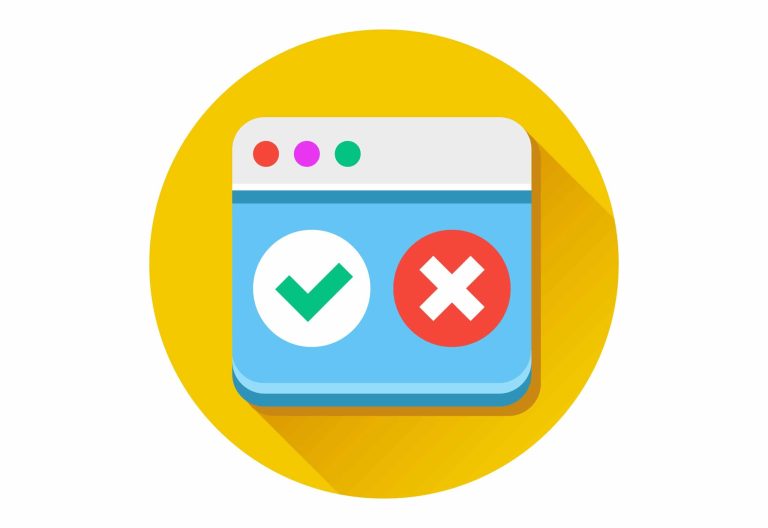Google is notoriously tight-lipped about their processes and algorithms, but earlier in November, Google’s October version of their previously secret Search Quality Rating Guidelines were leaked. This lead to Google releasing the full guide in November, unleashing some very usable information previously unknown to marketers and businesses alike.
HOORAY!
While it’s no silver bullet solution to all of our search related conundrums, it is a little bit of rope we can use to our advantage. So we’ve combed through the previously TOP SECRET 160-page PDF document for all the useful bits and we’re presenting them for you right here. Aren’t we nice!
What exactly is the ‘Search Quality Guidelines’ for?
Because Google make so many changes to their algorithm, they employ 3rd party people to be Search Quality Raters. These people, along with these guidelines, assess the quality of Google’s search results and a page’s Expertise, Authoritativeness, and Trustworthiness (E-A-T).
It’s important to note that “ratings from evaluators do not determine individual site rankings, but are used help us understand our experiments.”, this said by Google’s Mimi Underwood. “The evaluators base their ratings on guidelines we give them; the guidelines reflect what Google thinks search users want.”
So, what juicy information is in the guide that we can use?
These insights allow us to know what Google are looking at specifically, and in turn ensure we’re doing our best to tailor our efforts to suit.
Your Money or Your Life
Or YMYL for short, this term describes website pages that take payments, collect personal details, or offer advice that could affect the visitor’s life and well being. As such, Google have very high Page Quality rating standards for YMYL pages, and Google gives its raters specific things to look for when rating these pages. Here’s some tips to ensure your YMYL pages are up to par and pass the guidelines:
- Provide contact details
This shows you are accountable for your content and gives more authenticity to the page. It also gives the site visitor the opportunity to contact you to ask important questions related to your content.
- Ensure your content is written by an authority on the subject
If your content offers health or financial related advice, it’s important the content is written and backed up by an authoritative figure such as a financial expert or medical professional. Raters will look for evidence of authorship on such articles. - Provide Up-to-date information
YMYL pages needs to be updated as legislative developments and advancements in research take place. - Use Sophisticated Design
It is expected that YMYL pages have sophisticated, well organised design. It should be easy to navigate, read and digest. - Display your Reputation
Websites that are reputable are more likely to be trusted and rated well by Quality Raters – displaying accreditations, certifications and guarantees increase the authenticity of your reputation.
Website maintenance
Google look for signs that a website is being maintained and updated. This extends beyond content being kept current and seeing a recently dated content on the website – it also includes technical maintenance, for example:
- The website functions properly and is bug free.
- All links work.
- Site displays properly in latest browser versions.
Website reputation
Google specifically tell their Evaluators to look outside of the website for independent reputation information. It’s not enough to claim to be the best of the best, you need proof based on the experience of real users, as well as the opinion of people who are experts in the topic of the website. Some tips to boost your reputation:
- Include certificates of accreditation on your website
- Get links from official partners and accreditors with good reputations.
- Collect reviews from real customers and clients on Google+
- Any authoritative contributors to your site content should display authorship.
Qualities of High Quality pages
There’s a large amount of information about Google’s quality scale, but the commonalities of High Quality pages include:
- A satisfying amount of of high quality Main Content (MC – content that serves the purpose of the page).
- E-A-T.
- Good reputation.
- A satisfying amount of information (e.g. About Us, Contact, etc).
- Secondary Content (SC) that contributes to the user experience.
- Functional design that allows the users to easily focus on Main Content.
- And a website that is well cared for and maintained.
Emphasis on mobile friendly websites
This isn’t simply checking the box and having a mobile friendly website, all of the same criteria apply in addition to such things as common mobile pitfalls.
Look out for:
- Hard to enter data.
- Horizontal scrolling.
- Difficult to use menus or navigation.
- Images that aren’t resized for mobile.
- Speed and consistency of loading.
Know Simple Queries
This is an understanding of how Google interprets the intent of search queries, and in the case of Know Simple Queries they’re talking specifically about queries that can be answered in 1-2 sentences. These are the kind of searches that show a featured snippet at the top of the page, like “how tall is michael jordan”.
- Tip: Look through each page pf your website – is it possible to work out what the page is about in the first 5 seconds of viewing it?
Local search intent
Google gives emphasis on understanding queries that have a local intent, whether that’s based on using the user’s location (e.g. “restaurants”) or an explicit location (e.g. “restaurants in melbourne cbd”). These varying intents can effect what displays in search results, including Local blocks and the distance of the locations shown in them.
Needs Met scale
A new addition to the guidelines, the Needs Met scale determines how well a page was “helpful and satisfying” based on the search query (and intent). These vary between “Fails to Meet” i.e a non-mobile friendly website is automatically rated this for mobile searches, and “Fully Meets” for sites that 100% meet the needs of the search, for example a brand name search.
Relationship between E-A-T and Needs Met
These ratings are independent, as E-A-T is only about the website itself while Needs Met is about the quality of that result in answering the search query. A page could have excellent E-A-T but fail the Needs Met test, at the end of the day “useless is useless”. However a page can’t get a high Needs Met rating if it has a low E-A-T rating.
This is a lot of information to take in, even in it’s paraphrased format, however these insights certainly help us to understand Google better and what it takes to rank well. Marrying the understanding of how Google interprets (and classifies) certain search queries, how that effects what’s displayed on search results, and how it’s determining if a website belongs there.
For the most part the ideology is unchanged – focus on your users, create high quality and useful content, and E-A-T.

![Inbound Marketing 2016: What it is, and why you need it [infographic]](https://staging.skyrocketmarketing.com.au/wp-content/uploads/2023/07/inbound-marketing-2016-768x469.jpg)




